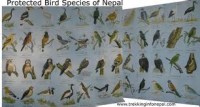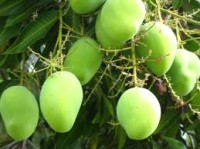Trek to Solukhumbu region
A trek to the Solukhumbu region in eastern Nepal takes you to a wide range of wilderness and cultural encounter, especially in the Everest region. A walk from through the middle hill of Solu and the trek in the higher altitude of the Khumbu to the base of Sagarmatha (Mt Everest) gives you the opportunity to observe and participate in the daily life of legendary Sherpa community. Sherpas are considered as the hardiest and most egalitarian people in the world.
Located between the elevation of 2,600m to 3,200m, Solu or the Sho Rung (as it is called by the Sherpas) extends from Jiri to the Dudh Koshi River. The farmland of the region is cultivated with maize, wheat, barley and apple and the climate, forest and pasture land are all well watered.The major attraction of the region is Mount Everest. Also, a new trekking trail from Dudhkunda to Kaling, known as Rai-Pikey trail is another attraction of the place along with the Himalayan lifestyle, culture and a wide range of nature experience.
Situated at the distance of 241 kilometers from Kathmandu on the lap of the Khumbu Himal is the homeland of Sherpas, Namche Bazaar. The unique natural heritage of the place includes the Sagarmatha National Park and ponds of the area which consists of the highest peak of the world, Mt. Everest along with other peaks such as Lhotse Shar, Cho Oyu, Ama Dablam, Pumori, Kangtega, Gyachung Kang, Thamserku and Kwangde. The park also consists of the upper catchment areas of the Dudh Koshi, Bhote Koshi and the Imja Rivers. The major cultivated products here include barley and potatoes and the park is inhabitation of the Sherpa community who have also made their named in mountaineering and trekking. The park was declared as a World Heritage Site in 1979.
The place is also rich in terms of biodiversity with the presence of plants like rhododendron, birch, blue pine, juniper and silver fir which is found up to an altitude of 4,000 m. The hillsides around the villages of Namche Bazaar, Khumjung, Thyangboche and Thame in the late spring and summer are filled with colorful varieties of species of rhododendron in the full bloom. The wildlife found here consists mostly of Himalayan thar, musk deer, pikka (mouse hare), weasel, goral and jackals along with the rare sights of wolf, Himalayan black bear, lynx and snow leopard. Impeyan pheasant, blood pheasant, snow cock, snow pigeon, red billed and yellow-billed cough, Himalayan griffon vulture and lamergeirer are some of the birds species found here.
As there aren’t any roadways leading to the Khumbu region, one needs to trek all the way to it from Lukla which can be accessed by air from Kathmandu. From Lukla two days walk will take you to Namche Bazaar or you could also go for the alternative route from Jiri through Arun valley in November and from March to May. Besides the park, Gokyo valley and Thame valley are the other attractions of the region. Although boarding and rooms are available, travelers are suggested to come with camping, food and fuel support that will enable them to move freely. Dudhkoshi, Howang, Inakhu, Linkhu, Lumadi and Solu are some of the popular rivers of the place.







